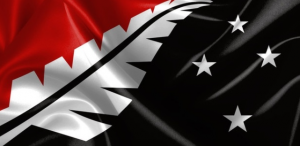Notes from Georgetown
Whilst teaching a course on New Zealand history at Georgetown University in Washington DC in 2009, Danny was able to briefly introduce the topic of New Zealand’s sesquicentenary 1990 to an amazing group of 35 young American students.
Sesquicentenary was a good way into a much larger New Zealand history focusing on issues of ‘national identity’ – and where Māori fitted into that tenuous concept. The pages on Sesquicentenary 1990 that follow are interesting because they focus on how, in 1990, issues of national identity / Māori identity were very much in focus – as a commemoration of our history, the events comprised a good ‘sounding’ as to where New Zealand was at, on such issues.
Remembering origins
During next year, 2020, we will commemorate many past events. One that might get overlooked is the Sesquicentenary of 1990 which of course was quite an event, at the time at least. New Zealanders were asked to reflect on what it meant to be a New Zealander, especially where relations with Māori were concerned.
Strangely enough, the Land Wars rated barely a mention; they certainly didn’t have the profile they have today, with so many new historians now joining the fray, so to speak. But Treaty issues did remain front and centre of most activities, and there were many.
This section will examine the 1990 sesquicentenary within a range of headings – see the icons above.
In 1940, New Zealand authorities had faced the question of how to commemorate a centennial of the country’s colonial founding. Perhaps splendid pageantry and an international fair was the answer, paying homage to the early pioneers and their founding struggles.
To the 1990s
Fifty years later, in 1990, the nation’s Sesquentenary year arrived with the 1990 Commission asking similar questions of New Zealanders. But times had drastically changed; the focus had shifted from pageantry and fairgrounds to peoples and historical/communal relationships. By 1990, Māori had made significant political gains. But community relations at large remained ambivalent.
As the Commission’s original brief suggested, there were any number of good historical reasons for choosing 1990. Throughout the year, many hundreds of events were staged by communities, remembering past events thought to have left indelible marks upon the present.
By year’s end, the country had shown itself to possess intricate patterns of remembrance which had included focusing upon the small things as well as upon the ‘big themes’ of our collective memories. The most important ‘big theme’ event to be remembered in 1990 was undoubtedly the Treaty of Waitangi.
In 1840, 500 Maori chiefs had signed the Treaty in the far north at Waitangi, and at other locations around New Zealand, with representatives of the British Crown. Thus was established the legal basis upon which the formal colonisation of New Zealand could begin.
Remembering the Treaty
The Treaty signing ceremony at Waitangi had heralded the beginning of a new enduring relationship between its signatories, Māori and the Crown; or at least, this was the reasonable expectation of both parties. The years that followed however severely strained that expectation, especially for Māori, with a resonance that would reach far into the twentieth century.
Some Māori now considered that 1990 celebrations would be divisive and unwise. 1990 was therefore promoted by the Commission as ‘Te Wero, the Challenge’. New Zealanders were exhorted to make 1990 ‘a year to remember, reflect and look ahead.’ The Commission’s logo featured the majestic kotuku, or the white heron ‘guiding New Zealand to a new horizon.’
The Treaty signing ceremony at Waitangi had heralded the beginning of a new enduring relationship between its signatories, Māori and the Crown; or at least, this was the reasonable expectation of both parties. The years that followed however severely strained that expectation, especially for Māori, with a resonance that would reach far into the twentieth century.
Māori uncertain
Some Māori now considered that 1990 celebrations would be divisive and unwise. 1990 was therefore promoted by the Commission as ‘Te Wero, the Challenge’.
New Zealanders were exhorted to make 1990 ‘a year to remember, reflect and look ahead.’ The Commission’s logo featured the majestic kotuku, or the white heron ‘guiding New Zealand to a new horizon.’
The commemorations of 1990 presented New Zealanders with a chance to take stock of their historical relationships, especially with Maori and, in that context, what it now meant to be a New Zealander.
As many commentators were observing as 1990 approached, more and more New Zealanders seemed to be focusing on the ‘perennial question of who and what a New Zealander was.’ The same issue had perplexed Pākeha after the 1870s, with the Land Wars over and an age of literary nationalism about to break over the country, a literature that searched for Pākeha roots amongst Aotearoa’s organic undergrowth.





